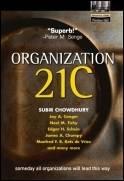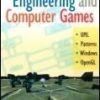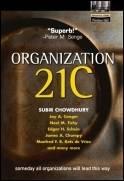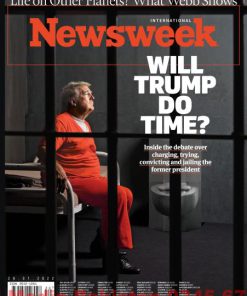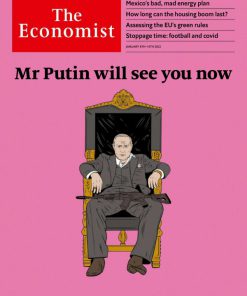Organization 21C Someday All Organizations Will Lead This Way 1st Edition by Subir Chowdhury 0130603147 9780130603142
$50.00 Original price was: $50.00.$25.00Current price is: $25.00.
Authors:By Subir Chowdhury , Author sort:Chowdhury, By Subir , Ids:0-13-060314-7 , Languages:Languages:eng , Publisher:Financial Times Prentice Hall , Comments:Comments:Published September 10, 2002, 416 pages.
Organization 21C Someday All Organizations Will Lead This Way 1st Edition by Subir Chowdhury – Ebook PDF Instant Download/Delivery. 0130603147, 9780130603142
Full download Organization 21C Someday All Organizations Will Lead This Way 1st Edition after payment
Product details:
ISBN 10: 0130603147
ISBN 13: 9780130603142
Author: Subir Chowdhury
This is the eBook version of the printed book. If the print book includes a CD-ROM, this content is not included within the eBook version. Organization 21C: Someday All Organizations Will Lead This Way brings together 19 all-new essays by the world’s leading management thinkers, covering every key driver of organizational success: leadership, process, people, and organizational design. You’ll find breakthrough ideas and practical solutions for virtually every tactical and strategic challenge you face. Key topics include: James Champy’s X-engineering, Total Rewards Management, the “New Boardroom,” the changing nature of power and influence, building workable hierarchies and sustainable organizations, and new best practices for leading change.
Organization 21C Someday All Organizations Will Lead This Way 1st Table of contents:
Chapter 1 Toward the Future of Organization
Organizational Winning Strategy by Leveraging Talent
Talents versus Knowledge Workers
Talents Make and Break the Rules; Knowledge Workers Conserve the Rules
Talents Create; Knowledge Workers Implement
Talents Initiate Change; Knowledge Workers Support Change
Talents Innovate; Knowledge Workers Learn
Talents Direct; Knowledge Workers Act
Talents Inspire and Lift People; Knowledge Workers Receive Information and Motivation
Talent Management System
Benefits of the TMS
Challenging Environment
PART 1: 21C LEADER
Chapter 2 Global Leadership from A to Z
The Competencies of the Global Leader
The Global Organization
A Definition of Leadership
The Development of the Global Leader
Tradition, Training, Transfer, Teamwork, and Travel
New Global Organizations
Global Leadership Best Practices
Attachment
Pleasure
Meaning
Soft Processes, Hard Results
Chapter 3 Developing Global Leaders
What Is Global Mindset?
Mapping Global Mindsets
Developing Global Mindset through HR Strategies
Demand-Driven or Learning-Driven Assignments?
Cross-Border Project Teams and Task Forces
Leadership Development for Global Mindset
Performance Management
Implementing Global Mindset
Equal Opportunity for All—Regardless of Passport
Changing the Globalization Paradigm
Chapter 4 World-Class Leadership for World-Class Teams
Views of Leadership
Born-to-Lead School
Self-Development School
Discretionary Leadership
Visioning
Dialogue
Communicating
Diversity
World-Class Leadership Means World-Class Teams
Promoting a Shared Philosophy
Conclusion
Chapter 5 Situational Factors in Leadership
A Definition of Leadership
The Heroic Model of Leadership
The Situational Approach to Leadership
Contingency Models of Leadership
Illustrating the Three Models
A Contingency Model of Leadership Style
A Taxonomy of Leadership Styles
Toward a Normative Model
Toward a Descriptive Model of Leadership Style
Conclusion
PART 2: 21C PROCESS
Chapter 6 From Reengineering To X-Engineering
Inefficiencies and Opportunities Are Exposed
Owens & Minor, The Quiet Giant
X-Engineering Principles
Harmonization
Transparency
Standardization
Follow the Money
Go Broad
Know What Your Customers are Going Through
Chart Breakdowns
Fish Upstream
Chapter 7 Getting Hierarchy to Work
One-Sided Accountability
Why Doesn’t the System Change?
Principle #1: Acknowledge Inevitable Subjectivity
Principle #2: Practice Win-Win-Win Politics
Principle #3: Put Two-Sided Accountability Into Action
Human Nature and the Political Processes that Evolve
What Does Two-Sided Accountability Entail?
Getting Informed
Informing Others
Conserving Time and Energy
Respecting Individuality and Uniqueness
What Will it Take to Get Two-Sided Accountability?
Chapter 8 Total Rewards Management
Moving from Compensation to Total Rewards
Focusing on Execution as Well as Strategy
Integrating Reward Systems with Organizational Learning Systems
Revisiting the Concept of Equity
Public Sector Rewards Design
Extending Innovative Reward Systems to New Business Environments
Summary and Implications
Chapter 9 Putting Shareholder Value in the Right Perspective
The Value Creation System: Stakeholder Purposes, Contributions, and Derived Benefits
Consider Shareholder Value as the Result, not the Main Purpose, of Enterprise Value Creation
Inherent Business Differences and Their Impact on Balance
Products or Services with High Nobility and High Average Profitability
Products or Services with Low Nobility and Low Average Profitability
Products or Services with Low Nobility and High Profitability
Leadership’s Role in Promoting Balance and Thereby Improving Value Creation
“Corporate Citizenship” Is Not the Answer
What Can Leaders Do?
With Respect to Purpose Itself
With Respect to Strategic Direction
With Respect to Implementation
Conclusions
Chapter 10 The Death and Rebirth of Organizational Development
The Historical Phases of OD
Conception Phase (Late 1950s to 1963)
Pioneering Phase (1964 to 1973)
Self-Doubt Phase (1973 to Early 1980s)
Jack Welch Fathers the Rebirth of OD
Rebirth Phase (1980s to Present)
Action Learning at GE’s Crotonville Leadership Development Institute
Work-Out and the Development of Large-Scale OD Skills
Change Acceleration Makes OD a Mandatory Leadership Skill
Redefining Leaders as Teachers
The Dissemination of GE’s Model
The Royal Dutch/Shell Story
Step 1: Aligning the Point of View at the Top
Step 2: Developing the Change Team
Step 3: Engaging the Organization
Step 4: Developing Leaders at all Levels as Teachers
A Shell Best Practice: John Fletcher Transforms Shell New Zealand
Learning From the Royal/Dutch Shell Experience
Implications and Conclusions
PART 3: 21C PEOPLE
Chapter 11 The Boardroom of the Future
Shifting Leadership in the Boardroom: Truly Powerful Boards
Accountability for Performance: Formally Evaluating the Board and Its Directors
Critical Knowledge for the Board: Strategy and Globalization
Harnessing the Power of Information Technology: Information-Age Boardrooms
Broadening the Board’s Mandate: From Shareholders to Stakeholders
Concluding Thoughts
Chapter 12 Power and Influence
Jack Welch: Master of Power
Structural Levers
Situational and Personal Bases of Power
What Will Not Change About Power and Influence
How Power and Influence Are Likely to Change
Increasing Need for Rapid Change
Knowledge and Expertise Throughout the Organization
The Core Dilemmas
Power Use that Counters these Dilemmas
Increasing the Total Amount of Power
Making Vision Real, Central
Using Mutual Influence
Performance As an Increasingly Important Source of Power
Conclusions
Chapter 13 Framing—It’s Either Us or Them
The Bottom Line
Us in the Future
Doing More With Less
Going Global
Outsourcing
Employing Generation X
Affirming Employees: Moving to Us from Them
Affirm Employees as Contributors
Affirm Employees as Workers
Affirm Employees as Members of Outside Groups
Affirm Employees as Individuals With Physical and Psychological Needs
Chapter 14 Developing Emotional Intelligence
Can a Person Grow and Develop their Talent?
Self-Directed Learning
The First Discontinuity: Catching Your Dreams, Engaging Your Passion
The Second Discontinuity: Am I a Boiling Frog?
The Third Discontinuity: Mindfulness through a Learning Agenda
The Fourth Discontinuity: Metamorphosis
The Fifth Discontinuity: Relationships that Enable Us to Learn
Concluding Thought
Chapter 15 What Stays the Same
The Challenge—Managing the Human Animal in the 21st Century
Human Nature, Culture, and Environment—Collision or Combination?
The Scientific Foundations of the New Darwinism
The Nature of Human Nature
Drives
Individual Differences
Ways of Thinking
Social Instincts
Community Politics
Natural Magic and Mysticism
Future Shock? Implications for a 21st Century of Change
Globalization
Inequality and Conflict
Environmental Costs and Catastrophes
Demographic Time Bomb
Death of the Corporation
Virtuality and the Networked Economy
Transformed Roles in the Knowledge Economy
New Forms of Governance and Leadership
Ways Forward to Change
Change Management and Hard-Wired Resistance
PART 4: 21C ORGANIZATION
Chapter 16 The Sustainability of Organizations
What is the Nature of the Re-examination and Renewal We Must Undertake Now? And What is the Future R
What is Sustainability?
Is it Possible to Create Sustainable Enterprises?
How is Ecological Sustainability Achieved?
Chapter 17 Organizational Culture
Analyzing Corporate Culture
Networked Cultures
Mercenary Cultures
Fragmented Cultures
Communal Cultures
Culture and Change
Conclusions
Chapter 18 Leading Organizational Change
Does Leadership Matter?
Important Characteristics of Leadership
Leading Organizational Change
Prelaunch Phase
Launch Phase
Postlaunch: Further Implementation
Sustaining the Change
Conclusion
Chapter 19 Building Organizational Fitness
The Dynamics of Organizational Fit and Fitness
The Silent Killers: Undiscussible Barriers to Organizational Fitness
Enabling an Honest Organizational Conversation That Will Produce Fit and Fitness
Organizational Fitness Profiling
Stage 1: Develop a Statement of Business and Organizational Direction (1–2 Weeks)
Stage 2: Complete a Broadly Validated Assessment of the Current State of the Enterprise (3–5 Weeks
Stage 3: Create an Integrated Agenda for Action (2–4 Weeks)
Stage 4: Develop and Mobilize the Commitment of Key Managers and Stakeholders Behind the Transformat
Building Organizational Fitness: Results and Implications
Tribute to Our Friend and Mentor
What I Learned from Richard Beckhard: A Personal Retrospective
Dick’s First Intervention
Dick’s Practical Wisdom and Emphasis on “Process”
Dick’s Brilliance as a “Designer of Social/Organizational Process”
Designing for Involvement in the Management of Change
Keeping Your Cool, Working the Problem
The Consummate Consultant
Co-editing the Addison-Wesley Series on Organizational Development
Knowing Oneself
Notes
For Further Reading
People also search for Organization 21C Someday All Organizations Will Lead This Way 1st:
21st century organization
21-1 work together
organization 1
organization challenge 2023
You may also like…
eBook PDF
Healing Foods Eat Your Way to a Healthier Life 1st Edition by DK Publishing 1465408533 9781465408532
eBook MOBI
My Lead Dog Was a Lesbian 1st edition by Brian Patrick O’Donoghue 0679764119 9780679764113
eBook PDF

